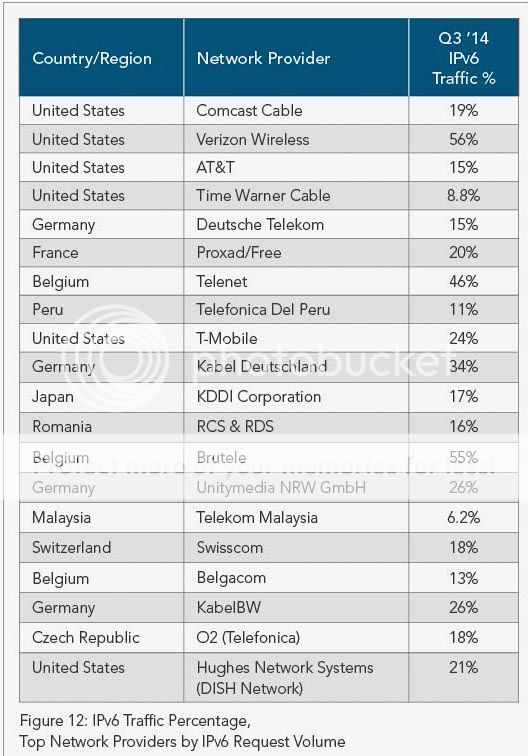While the full fruition of the Internet of Things may be a several years away, smart home and connected devices are already having an impact on the Internet.
Cloud-vendor Akamai Technologies released its third quarter 2014 State of the Internet report this morning, which said, in part, that the Internet of Things (IoT) was starting to change the Internet. The report provides regional and global statistics on connection speeds, 4K readiness, IPv4 exhaustion and IPv6 implementation efforts based on data that was gathered from the Akamai Intelligent Platform.
“One need only look to the sheer number of connected device- and smart home-related announcements that came out of the 2015 International CES to see that consumers are continuing to adopt and expect more from connected technology and services,” said David Belson, editor of the report. “The strong year-over-year growth trends illustrated in this quarter’s report show that the Internet is evolving and expanding to meet the growing demands of our increasingly connected lifestyles.”
For the second consecutive quarter, the global average connection speed remained above the 4 Mbps “broadband” threshold, but there was a 3 percent decline in the third quarter of 2014 to 4.5 Mbps.
Dividing up the data by countries, six of the top 10 posted increases in global average connection speeds, and all of the top-10 were above the 10 Mbps “high broadband” threshold. Among those increasing in average connection speed quarter-over-quarter, Singapore had the largest increase (12.2 Mbps), for an 18 percent improvement. The smallest growth was in Japan (15 Mbps), which was only up .8 percent from the second quarter. In addition, Ireland (13.9 Mbps) joined Singapore in seeing an increase of 10 percent or more from the previous quarter.
The global average peak connection speed also saw a slight decline in the third-quarter, dropping 2.3 percent to 24.8 Mbps. Hong Kong had the highest average peak connection speed at 84.6 Mbps, followed by Singapore (83 Mbps.) All 10 countries/regions saw significant increases in average peak connection speeds compared to the previous year. Uruguay (58.6 Mbps) led the group with a whopping year-over-year change of 334 percent, and Luxembourg (54.4 Mbps) saw speeds more than double, up 130 percent. A total of 135 qualifying countries/regions saw average peak connection speeds increase from the third quarter of 2013.
Global high broadband adoption rates, which Akamai defined as 10 Mbps or more, were down .5 percent in the third quarter, after seeing strong quarterly growth earlier in the year. In contrast to previous quarters, changes among the top 10 countries/regions were limited, with increases ranging from a half a percent in Japan (55 percent adoption) to 8.4 percent in Sweden (44 percent adoption).
The global high broadband adoption rate was up 22 percent, which was lower than the 65 percent increases seen in both the first and second quarters. Among the top-10 countries/regions, Japan was the only one to see a year-over-year change below 10 percent, while both Romania (49 percent adoption) and Israel (44 percent adoption) saw adoption rates more than double.
Across the other 62 geographies, yearly increases ranged from 6.3 percent in Japan to a massive 3,015 percent in Uruguay (7.3 percent adoption).
The global broadband adoption rate (4 Mbps or more) reached 60 percent, an increase of 1 percent quarter-over-quarter. South Korea remained the country with the highest level of broadband adoption at 96 percent, with Bulgaria a close second at 95 percent.
4K readiness
The report also looked at the geographies that were most likely to support connection speeds above 15 Mbps, as Ultra HD adaptive bitrate streams typically require bandwidth between 10 and 20 Mbps, according to Akamai.
In total, 52 countries/regions qualified for inclusion in the third quarter, with 12 percent of the global connections at or above the 15 Mbps threshold. While down 3 percent quarter-over-quarter, readiness increased 32 percent year-over-year. South Korea remained the country with the highest level of 4K readiness, with two-thirds of its connections to Akamai at or above 15 Mbps.
IPv4/IPv6

The report said that in the most recent third quarter, over 790 million unique IPv4 addresses from 246 countries connected to the Akamai Intelligent Platform. Akamai said that while it believes there were nearly 800 million IPv4 addresses, it represents more than 1 billion web users.
The global number of unique IPv4 addresses making requests to Akamai grew by nearly two million quarter-over-quarter, a nominal increase after a loss of seven million in the second quarter.
Looking at the top 10 countries in the third quarter, the unique IP count in the United States saw a small gain of approximately 20,000 addresses. In addition to the United States, Brazil, France and Russia saw nominal increases in unique IPv4 address counts, while the remaining six countries saw unique IPv4 address counts slightly decline from the second quarter. Fifty-eight percent of countries saw a quarter-over-quarter increase in unique IPv4 address counts, with 28 countries/regions growing by 10 percent or more.
Cable and wireless providers continued to drive the number of IPv6 requests made to Akamai. Verizon Wireless (56 percent) and Brutele (55 percent) saw more than half of their requests to Akamai made over IPv6, with Telenet third (46 percent.)

